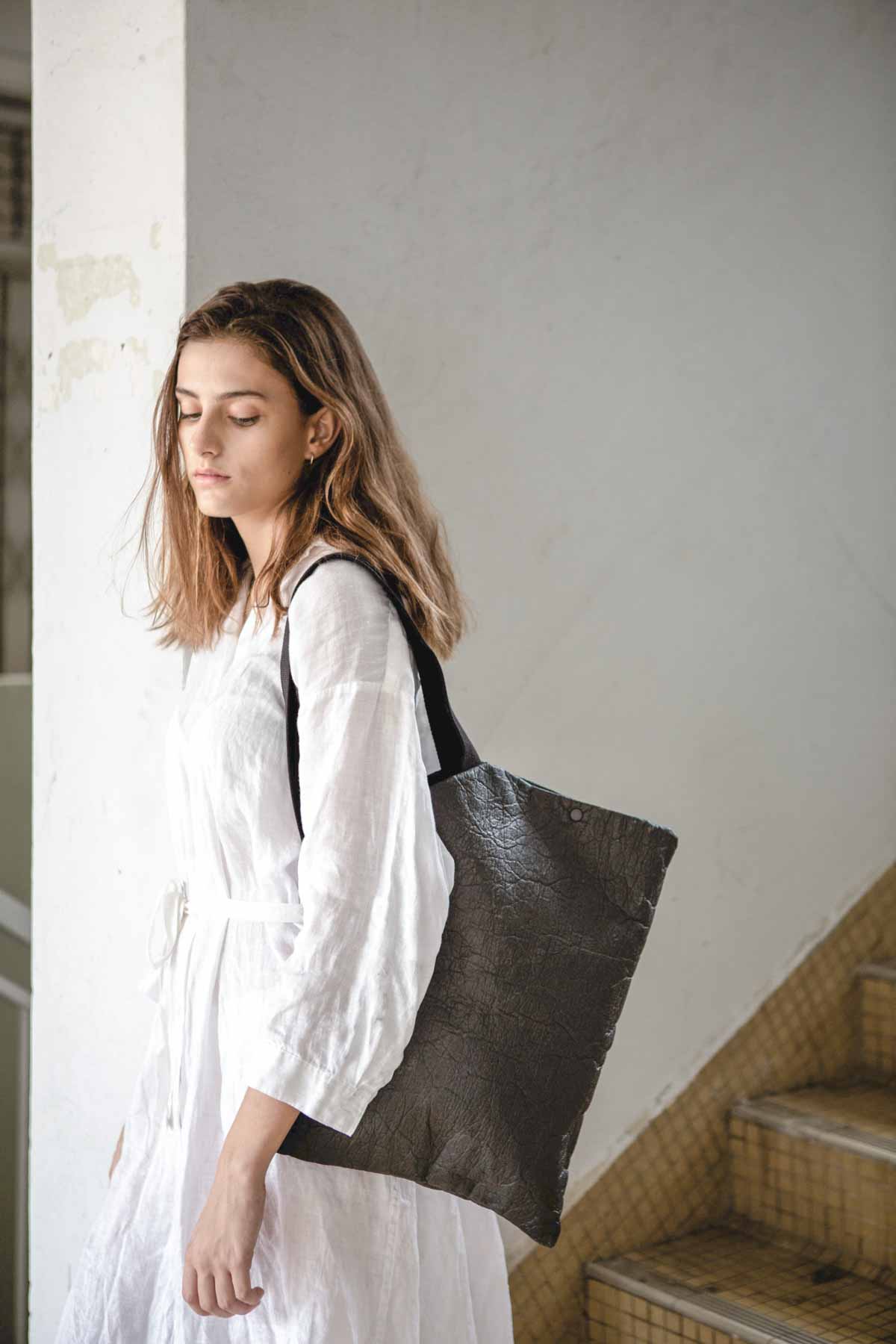
Created by Ananas Anam, Piñatex is a natural, cruelty-free textile derived from pineapples that is shaking up the leather industry. From animal cruelty to dangerous chemical tanning, leather has long been the source of much controversy so Dr. Carmen Hijosa, founder and CEO of Ananas Anam, made it her mission to develop and offer an alternative that was both ethically and environmentally-sound.
Piñatex is created by extracting fibres from pineapple leaves, which otherwise contribute to the 13 million tonnes of waste that comes from global pineapple agriculture every year. The fibres are then washed, dried, purified and mixed with a vegetable plastic material called PLA – this creates a non-woven mesh which is the base material of all Piñatex collections. The final stages are the addition of GOTS, (Global Organic Textile Standard), certified pigments for colour and a resin top coating for durability and water resistance.

Aside from bringing additional income to farming communities and utilizing an otherwise redundant material, Piñatex fulfils some very crucial sustainability criteria. Unlike real leather and other synthetic alternatives, which require an abundance of resources, Piñatex requires no other environmental resource other than the leaves. Not only this, Piñatex doesn’t have the high waste mass of real leather, as any residual leaf biomass is kept to be used as natural fertilizer or bio-fuel.

This all contributes to Piñatex’s closed-loop production process. “Our inspiration is the ‘Cradle to Cradle’ approach, which supports ecological, intelligent and innovative design policies within today’s economic environment,” reads Ananas Anam’s website. For those who don’t know, ‘Cradle to Cradle’ is a globally recognized standard of product safety and sustainability, broken down into five categories: material health, material reutilization, renewable energy and carbon management, water stewardship and social fairness.

From this, it is clear to see how Ananas Anam landed their B Corp status. This innovative and versatile material is rapidly gaining traction in both the fashion and furniture industry. “Design is a connecting tool between people, economics and the environment – and out of this communion, understanding and respect new ideas and products with integrity can come about,” said Dr. Hijosa.





